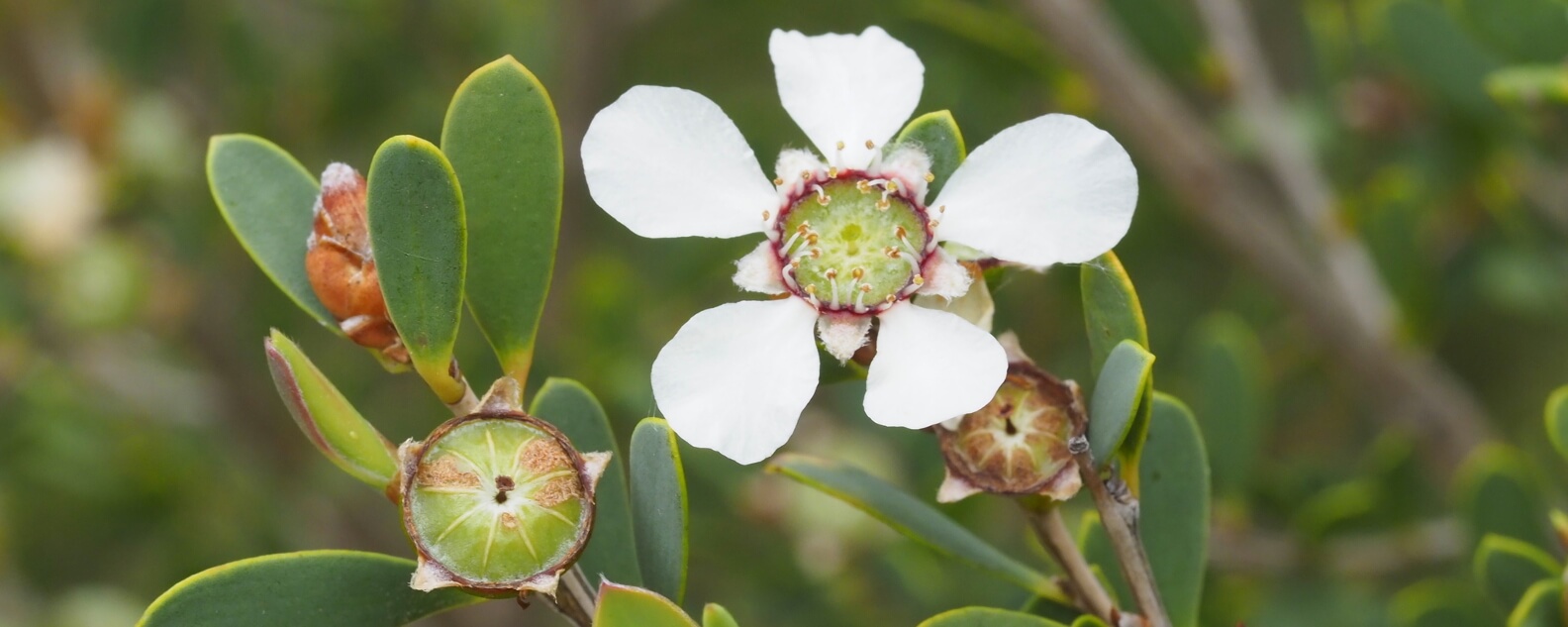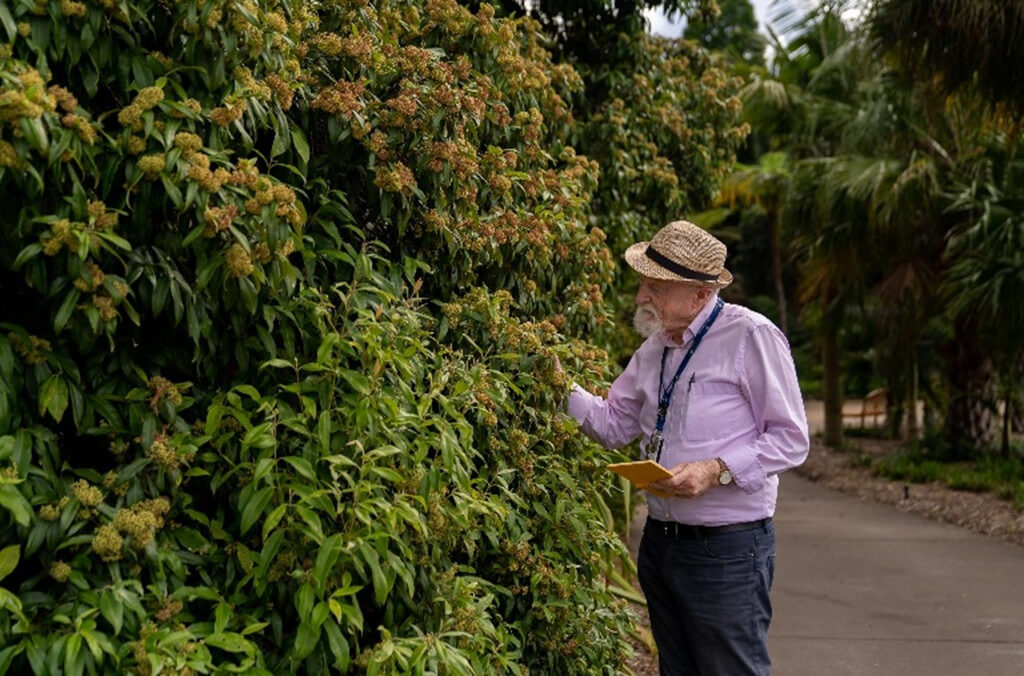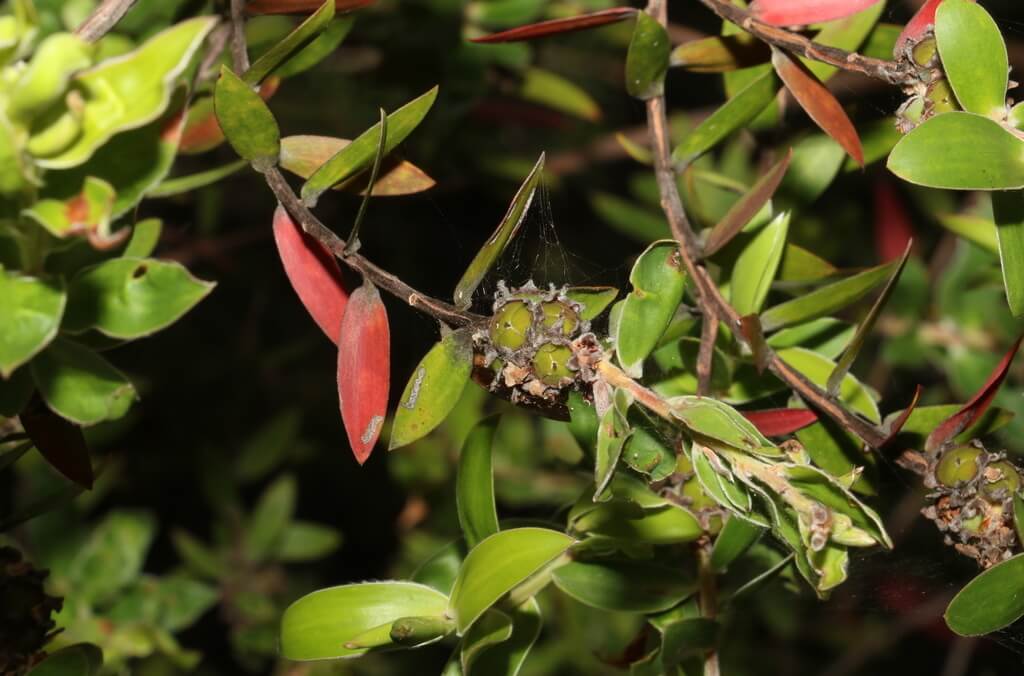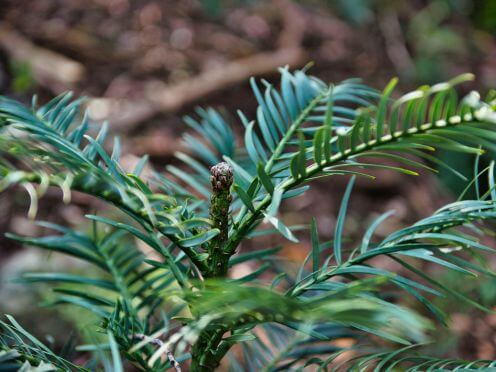Taxonomy untangles tea trees to help them thrive
After years travelling across Australia sampling and sequencing numerous species in the genus Leptospermum, scientists have established four extra genera – renaming dozens of iconic tea tree species.

A strong hunch sparks an investigation
The native Coast Tea Tree (originally Leptospermum laevigatum) has low-lying, thin twisted branches, which are dotted with fragrant white flowers. It is a vital species for maintaining the integrity of Australia’s sand dunes and is found from the cliffs of north Nambucca Heads in New South Wales all the way down to northern Tasmania.
Botanic Gardens of Sydney Systematic Botanist, Dr Peter Wilson, held a long suspicion that a major group of Leptospermum species, the one that includes the species that produce manuka honey, were not closely related to this prominent species in the genus and he began investigating their origins.
Dr Wilson and his team spent many years travelling across the eastern states and even Western Australia, painstakingly collecting and sampling species within the genus Leptospermum, plus species from all related genera. Incredibly, after sequencing DNA from each sample, they found key differences between them.
The study exceeded Dr Wilson’s expectations and revealed that four extra genera, two in Western Australia and two in the eastern states, should be recognised to untangle this part of the Myrtaceae family tree.
“All species transferred out of the genus Leptospermum, like the Coast Tea Tree, will have new names,” says Dr Wilson.
One of the new genera in the east is Gaudium, which comes from the Latin word for joy and is named after the late Botanic Gardens botanist Joy Thompson, who published a major study of the genus in 1989. This genus has 22 species and is the new home for the Coast Tea Tree – now named Gaudium laevigatum.
“Another of the new genera is Aggreflorum, which means ‘aggregated flowers’ and is the smallest segregate genus in eastern Australia with just ten species – four of which occur in New South Wales.”

Dr Peter Wilson and his team have spent years travelling to sample and identify species correctly. Credit: Michael Santos/Botanic Gardens of Sydney
What’s in a name?
Taxonomy is what helps us to understand a species origin, function and why it should be conserved. It is the science that discovers, describes, and classifies all living things. Having a correct scientific name is like a valid ID card – it links to all the available data on that species which is crucial for research and conservation purposes.
Scientific names are carefully controlled and take years, sometimes decades, to agree upon. Many aspects of the naming of plants, animals, fungi, bacteria and other organisms are controlled by agreed sets of international rules – the Codes of Nomenclature.
“These set of codes state a name must be permanently associated with a specimen, so you have to get it exactly right. They also say the names must be accessible to other taxonomists, usually by publishing in a peer-reviewed scientific journal. It’s a long but rewarding process.”
Dr Wilson
Communication key to conservation

Aggreflorum speciosum, one of the newly named genus. Credit: Greg Tasney/ iNaturalist
The work of establishing new genera and renaming species helps communities and conservation groups to ensure the right species are eradicated or protected across Australia.
The Coast Tea Tree, like many in the Myrtaceae family, is a crucial part of its native ecosystem and helps maintain biodiversity, attracting birds and insects. It is also useful as a windbreak plant and helps stabilise sandy soils – it’s often planted in rehabilitation areas where construction or mining has taken place.
However, like many plants taken out of their natural environment, this eastern-born shrub spread prolifically when it was introduced into Western Australia. From our west coast to as far as South Africa, it’s now classified as widely invasive.
Another area of conservation concerning tea trees is the plant pandemic Myrtle rust (Austropuccinia psidii) – a fungal disease which infects plants in the Myrtaceae family such as tea tree and eucalyptus. Since myrtle rust was first detected in NSW in April 2010 it has spread across the eastern Australian landscape and is causing devasting impacts to thousands of iconic species – including whole plant death.
The new research by Dr Wilson and the team will play a crucial role in managing and protecting our native tea trees.
Further reading
Read Dr Wilson and the team’s research, “Revised generic taxonomy of the tribe Leptospermeae (Myrtaceae) based on morphological and DNA data” published in Taxon.
Related stories
Working with stakeholders from different Australian states, geneticists have helped to clarify taxonomy and conservation planning for seven leafless Bossiaea species.

Bunga Bangkai (Indonesian), Titan Arum or Amorphophallus titanum has the biggest, smelliest flower-spike in the world. It flowers for just 24 hours, once every few years… and in January 2025 one bloomed at the Royal Botanic Garden Sydney. Named Putricia by staff at the Botanic Gardens of Sydney, she quickly captivated people from all over the world, writes John Siemon, Director of Horticulture and Living Collections.

The legendary Wollemi Pine (Wollemia nobilis) has captivated the world since its discovery in the Blue Mountains in 1994. Three decades later, its survival story isn't over yet with the critically endangered conifer still at risk of extinction.